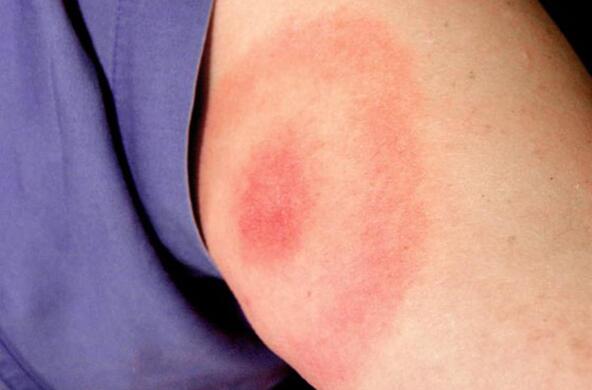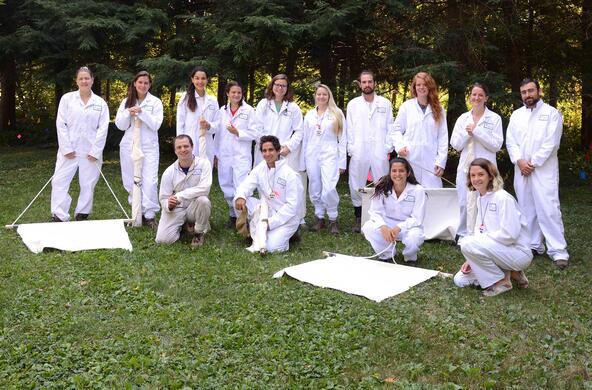An excerpt from "The Lyme Wars", a New Yorker article reporting on the controversy surrounding diagnosis and treatment of Lyme disease. Columnist Michael Specter interviewed Cary disease ecologist Richard Ostfeld about the ecology of ticks and the spread of the disease.
Today, deer are no longer exotic in the Hudson Valley, and the area has the highest rate of Lyme disease in the country. If you drive the back roads of Columbia County at dusk, deer are nearly impossible to avoid, and accidents are common. Ticks are constantly on residents' minds, and watching children run barefoot to the edge of the bucolic woods is no longer a carefree delight. Deer are not Ixodes's most important host, but they have come to symbolize the spread of Lyme, and represent an ecology that has changed dramatically in the past thirty-five years. "Once you have Lyme disease in the area, and once you start to carve up the forest into little bits, and especially when the fragmentation is done by suburban development, you get an increase in Lyme risk," Richard Ostfeld told me recently when I met with him at the Cary Institute of Ecosystem Studies, in Millbrook, New York. Ostfeld, a senior scientist there, has studied Ixodes for more than a decade. "The best host for the tick and pathogens is not deer but white-footed mice," he said. "And they do beautifully when you chop the forest into bits. They thrive. And competitors do not."
Ixodes scapularis is surprisingly sophisticated for an organism that, until it is engorged with blood, is less than half the size of a pea. "These ticks are nimble, durable, and adaptable," Ostfeld said. The black-legged tick passes through three distinct phases—larva, nymph, and adult—and females require a blood meal at each stage. They usually pick up the spirochete, which under the microscope looks like a spiral French fry, in their first meal, and pass the disease to the host—small mammals, birds, deer, and sometimes humans—during the second or the third. To insure that it becomes engorged, the tick can attach its barbed mouth to a host for up to a week. First, though, the tick releases a series of anti-inflammatory chemicals and antihistamines to numb the skin and make a bite difficult to notice. It then secretes a compound called cementum, a kind of glue that helps the tick adhere to its prey. With those tasks accomplished, the tick bores its mouthparts into its host. While it feeds, the tick can inject borrelia, and other pathogens, into the bloodstream.
Ostfeld is a thoughtful, soft-spoken man, not unduly excitable. But when he talks about the Lyme bacterium he sounds like a proud parent. "Borrelia is a remarkable creature," he told me. "It has all my respect." He went on to explain that the bacterium, after slipping through the tick's mouthparts, can change its form, cloaking itself in the surface proteins of the tick's saliva. Then, much like H.I.V., the bacterium hijacks the immune system. "It doesn't stay in the bloodstream for long," he said. "Instead, borrelia manages to insinuate itself into parts of the body that have fewer circulating antibodies, where it is harder for antibiotics to reach."
The relationship between the tick and borrelia can be compared to the deadly, symbiotic partnership of Plasmodium falciparum parasites and the anopheles mosquitoes that transmit malaria, which have evolved together for thousands of years. Genetically, the bacteria are so adaptable that it is possible to find different strains of borrelia in the same tick. "Some of these infections are really very worrying," Ostfeld said, as we sat, one sunny morning, in his green, airy office at the institute. "We can't even know yet how big a problem a bacterium like miyamotoi will become. But it is possible that Lyme will turn out to be among the least threatening of the pathogens carried by Ixodes."
Ostfeld, a field biologist, received his Ph.D. from the University of California at Berkeley, and studies the ecology of small mammals—skunks, possums, chipmunks, and white-footed mice—which are found in large numbers in the Hudson Valley. Soon after he arrived at the institute, in 1990, he noticed something striking about the thousands of mice he had trapped: their ears were often covered in ticks the size of poppy seeds. Those ticks, Ixodes nymphs and larvae, were feeding on the mice. "That was the beginning of my interest in Lyme disease," he said. His 2010 book, "Lyme Disease: The Ecology of a Complex System," describes the environmental relationship in detail. Before European colonists arrived in America, ninety per cent of New England and New York was covered in forest. Lyme was unknown. In the next century, forested areas were cut by half. "But it was a shitty life here," Ostfeld said. "Colonists had a rough go of it. The rocky soil was infertile and difficult for agriculture." In the eighteen-thirties, when the Erie Canal opened the Ohio Valley to agricultural development, the farms of the Northeast were abandoned. The forests returned, along with deer. Mice and other small mammals accompanied them.
Diagnostic failures cause much of the confusion associated with Lyme disease. It takes the tick at least thirty-six hours to transmit borrelia. If ticks are removed immediately, the threat of infection falls dramatically. But it takes weeks, and sometimes longer, for blood tests to detect antibodies; a test taken too soon will produce negative results. Even then, many people who become infected will test negative in error, while others who aren't infected will test positive.
“You get people all the time who have Lyme but who do not know it,” Ostfeld said. “Their doctors don’t know it.” The basic blood tests look for antibodies but are not always sensitive enough to pick out the right ones. Another test for Lyme disease involves PCR, a technique that allows scientists to amplify the number of copies of a specific region of DNA. When done properly, that test can detect the Lyme spirochete directly. Yet it is prone to contamination, and it often produces positive results for people who are not infected. The situation is similar to one in India, where tens of millions of people test positive for tuberculosis. Few of them will actually get sick, but many are mistakenly treated with highly toxic drugs. A relatively new, but expensive, diagnostic machine can differentiate between latent and active t.b. infections. “We badly need that kind of diagnostic certainty with Lyme,” Ostfeld told me. “And we do not have it.”







